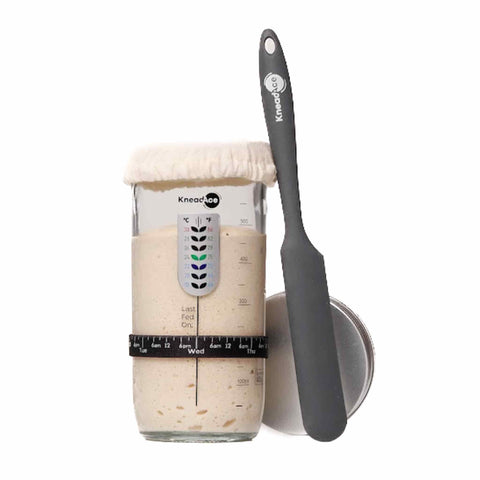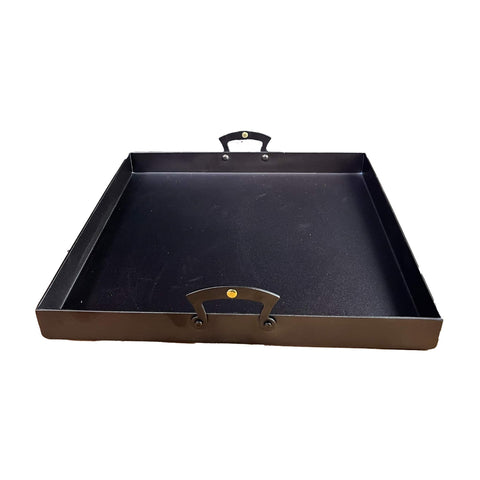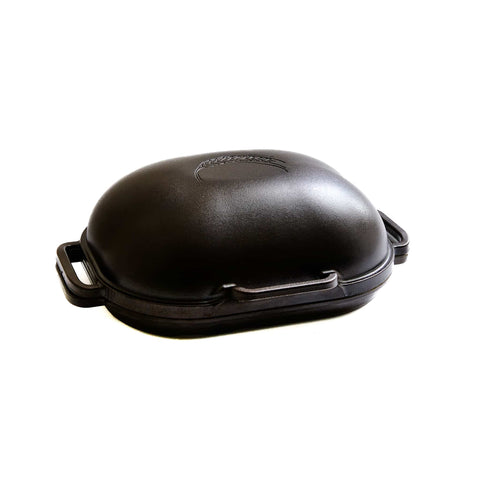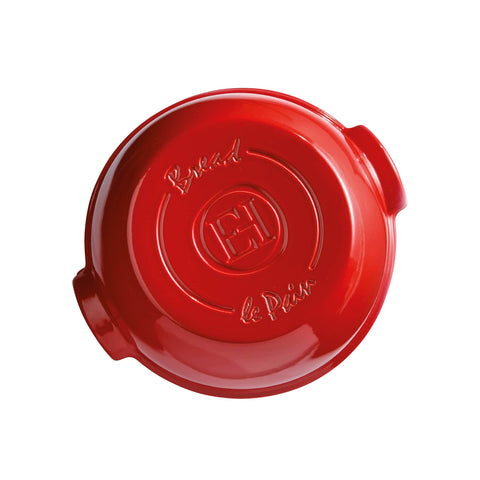The Ultimate Sourdough Starter Guide
by Ellie Edwards

One of the oldest forms of leavened bread has turned into the coolest carb to make and eat. Discover how to make the perfect sourdough starter and when you're ready move on to baking your first sourdough loaf with our handy tips and tricks.
What is a sourdough starter?
Sourdough starter is a combination of flour and water, which, when mixed together, activates and produces carbon dioxide bubbles. This chemical reaction helps bread rise.
Unlike commercial yeast, a sourdough starter works with bacteria in the air. These wild bacteria produce acid, lending sourdough its distinctive sour tang.
How to make a sourdough starter

The process of making sourdough starter from scratch takes about 5 days. Follow our instructions below for making your starter:
Method:
- Day 1: Mix 50g strong white bread flour with 50g warm-to-touch water and leave, loosely covered at room temperature for 24 hours.
- Day 2: Mix another 50g strong white bread flour with 50g warm-to-touch water into the existing mixture and leave, loosely covered at room temperature for 24 hours.
- Day 3: Repeat the day 2 process again.
- Day 4: Repeat the day 2 process again.
- Day 5: After four days, your sourdough starter should be looking nice and bubbly (if it doesn’t, keep feeding it with the above measurements once a day until it’s bubbly). Before you make your first loaf, discard all but 4 tbsp of the starter, feed it with another 50g of strong white bread flour and 50g warm-to-touch water, and leave, loosely covered for 8 hours. You are then ready to begin your first sourdough loaf.
Sourdough starter is best kept in a jar, with the lid a little open. This gives the starter room to breathe, meaning it won’t explode! You want to feed your starter with warm water and keep it in a toasty spot, as warmth helps wake up the starter and keep it nice and bubbly.
How do I keep my sourdough starter alive?
Once you’ve created your starter, it’s possible to keep it alive for years, if not decades by following a few simple steps:
- When feeding your starter, discard all but 1 tbsp. This helps keep it fresh. You can keep the discard and use it to make crackers, pancakes and even crumpets.
- Once you’ve used your starter to make your levain (keep reading to learn more), you want to give your starter a really big feed (another 50g flour/50g water ratio) so it’s ready to use again next time you want to bake.
- When you’re not baking a loaf of sourdough, keep the covered starter in the fridge. When you want to bake again, take it out of the fridge 2 days before you want to bake, pour away any liquid that has pooled on top and feed it once or twice a day. The liquid might be grey, but this is completely normal.
- If you’re not going to be baking for a while (a few months), you can also freeze sourdough starter by spooning the liquid mixture into ice cube trays. When it’s time to bake again, let the cubes thaw, and feed twice a day for a few days.
You’ll know when your sourdough starter is ready to use as it’ll have a sweet-sour banana-like scent and frothy head. If your starter doesn’t seem very active, it’s worth putting it somewhere warmer, or increasing the number of feeds up to two twice a day. And if it starts to smell of nail-polish remover, move it somewhere a little cooler.
What is a levain?
Sourdough bread is different from other breads in that it is made with a levain. The levain is just a larger version of your starter.
- To make the levain, you take a portion of sourdough starter and mix it with equal parts flour and warm water. This is then left overnight, ready to make the dough in the morning.
- In the morning, the bubbly levain is mixed with flour and water and left to rest for 20 minutes. This step is called autolyse, and is when the gluten forms bonds and structure. After this step, salt is added.
Making sourdough might appear to be more time consuming than a farmhouse loaf, but a lot of time the dough sits and bubbles away on its own.
After the bread has had its first rest and the salt has been added, you want to gently fold the dough up and over, turning 90 degrees, creating pockets of air. This process (also known as bulk fermentation) is done every 30 minutes for around 4 hours.

10 Best Buys: Sourdough & Bread-Making
The Spring Oven is a terracotta baking dome, designed to replicate a steam oven. Steam encourages better dough rise and a crispier crust, but achieving the right humidity in a standard oven can be difficult. The Spring Oven has a built-in water channel at its base that produces steam during baking. Its angled lid concentrates heat around the loaf and directs any condensation back into the channel, maintaining ideal moisture levels throughout the process.
The 24oz jar holds enough starter for up to three loaves, with a wide opening for easy feeding and cleaning. Handy markings show starter levels and the last fed date. The feeding day tracker band is marked with the days of the week and time of day so you can easily keep track of when you last fed your starter. Move it sideways to indicate the feeding time and up and down to mark the starting feeding level.
Goldie by Sourhouse gently warms your sourdough starter to keep it active and healthy. It maintains the ideal temperature range of 24–28°C (termed the 'goldilocks zone'), helping your starter grow faster and more reliably. Just place your jar on the warming base under the durable, clear glass cloche. A built-in light-up thermometer makes it easy to monitor the temperature and track your starter’s progress.
Goldie will shave an hour or more off the typical doubling time of a starter that’s kept in the fridge or on the counter. With your starter always in your eyeline, you can easily keep track of its progress. Whether you’re a baking pro or just getting started, this innovative home baking tool will help you achieve better, more consistent results.
In this sourdough making kit we’ve packaged 'Do Sourdough, by Andrew Whitley' with some key bread making tools: a bag of Matthews Cotswold Crunch Flour from one of the oldest family-owned mills in the country, a cane banneton to make your loaf beautiful, a dough scraper to work with the dough itself and a lame to make intricate patterns. Plus of course a large preserving jar, to keep your starter happy.
Andrew Whitley – a baker of over 30 years who has 'changed the way we think about bread’ – reveals how the slow fermentation that is key to real sourdough can happen while we are asleep or at work. And by using his simple and fuss-free method, everyone can make this wonderful bread at home.
This is a traditional cane proving basket, for artisan home baking. After shaping the bread dough, place upside down in the round cane banneton or proving basket for its final rise. When dusted with flour, the banneton will create a classic spiral pattern on the loaf's surface - most often seen on sourdough loaves.
Use a bread proving basket to help keep the bread's shape during proving. Also, because water is wicked away from the dough surface during the prove, the banneton is thought to help develop a better crust. Before the first use, spray with water and sprinkle well with flour.
Our choice of stand mixer, the Ankarsrum is a powerful tool. Unlike conventional stand mixers, the Assistent Original is designed to mimic hand kneading and it’s the bowl, not the whisk or dough hook, that rotates. Ideal for making cakes, cookies and bread, this fantastic stand mixer won’t overheat or overwork your dough.
The large stainless steel mixing bowl can handle up to 5kg of dough at a time, even stiff and heavy mixtures. You can safely reach in to add more ingredients or scrape the sides of the bowl while the dough is being mixed. The smaller plastic bowl is ideal for whisking and beating. Despite its powerful motor, the Assistent Original is very quiet and won’t move around on your worktop, even at full speed. T
A new release from Netherton Foundry, this deep, square tray is made from their signature black spun iron. It’s perfect for tray bakes and pillowy focaccia. It’s suitable for induction hobs, as well as barbecues, open fires and wood burning ovens. Cook indoors or outdoors, then carry the tray straight to the table. Sturdy riveted handles make it easy to lift and transport.
Spun iron is lighter than cast iron but with the same patina-building qualities. It develops a non-stick coating over time, so you can cook with very little fat. The tray is pre-seasoned with flax oil so you can start cooking immediately.
The Challenger bread pan is designed for home bakers. Made from thick cast iron, it traps steam and radiates powerful heat. The result: bakery-quality loaves with crispy, golden crusts. Designed like a Dutch oven, flipped, the dough sits on a flat tray. The domed lid traps the ideal amount of steam, then is simply lifted off after the first 20 minutes (or so).
Every Challenger bread pan is poured and hand-seasoned in the USA. The heavy cast iron is durable and easy to clean. It won’t crack or scratch over time, so you can pass it down to the next generation.
The baker is made from Emile Henry’s signature ceramic. It’s scratch-resistant and easy to clean. Use this bread baker to make sandwich loaves for lunch boxes and afternoon tea. Or, get creative and try soda bread or buttery brioche. This bread baker is made in France and comes with a 10 year guarantee. Founded in 1850, Emile Henry is a ceramic ovenware and tableware manufacturer based in France. Their passion for ceramics and respect for traditional French craftsmanship is evident in every thoughtfully designed item they produce. From bread bakers and pie dishes to stylish kitchen accessories, Emile Henry products are designed and made of the finest natural materials to make cooking and baking easier and more enjoyable.
One of our favourite bread knives, the Opinel bread knife's beautifully sharp blade glides through crusty sourdough, French baguettes and dense rye bread with equal ease. And with absolutely no squashing! It’s made from a stainless steel called ‘X50CrMoV15’ that’s highly resistant to corrosion, so your Opinel bread knife will stay in top condition for years to come. And the elegant handle is made from durable French beech wood.
Shop all sourdough and bread-making tools, and browse more baking and patisserie recipes and guides here.

About the author
Ellie Edwards is a food writer for Sous Chef. Previously she worked at olive magazine, writing about exciting new ingredients, UK restaurants and travelling the world to find the best cinnamon buns. When she's not exploring the likes of Belize, Kerala and Zanzibar, Ellie loves rustling up a feast in her London kitchen, with a particular passion for porridge, sourdough and negronis.












